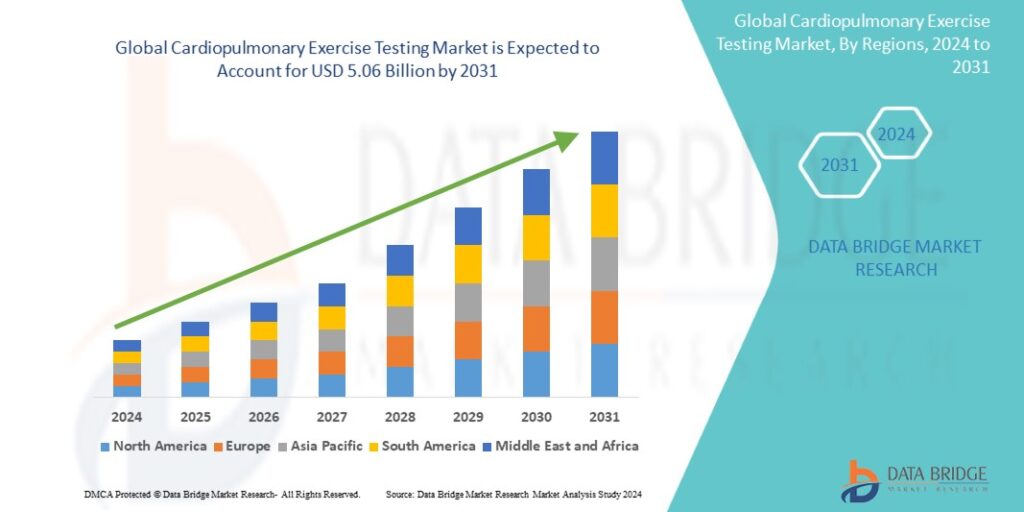Introduction
Cardiopulmonary Exercise Testing (CPET) has evolved significantly over the years, with technological advancements improving its accuracy, accessibility, and clinical applications. CPET plays a critical role in assessing cardiovascular and pulmonary function, providing valuable insights into a patient’s exercise capacity and underlying physiological limitations. This article explores recent technological advances in CPET, their implications for patient care, and future trends in this dynamic field.
Definition
Cardiopulmonary Exercise Testing (CPET) is a non-invasive diagnostic tool that evaluates the heart, lungs, and muscles’ integrated response to physical exertion. It measures key parameters such as oxygen consumption (VO₂), carbon dioxide production (VCO₂), and ventilatory efficiency to assess cardiovascular and respiratory function. CPET is widely used for diagnosing unexplained shortness of breath, assessing fitness levels, and guiding treatment plans for patients with heart and lung conditions.
Evolution of CPET Technology
CPET traditionally involved complex and time-consuming procedures, requiring bulky equipment and specialized personnel. However, technological improvements have streamlined the process, making it more efficient and user-friendly. Early CPET systems relied on rudimentary gas exchange analysis and limited data collection. Modern advancements have integrated sophisticated sensors, real-time data processing, and artificial intelligence (AI) algorithms to enhance test precision and usability.
Key Technological Advances
1. Portable and Wearable CPET Devices
One of the most notable advancements in CPET is the development of portable and wearable devices. These systems allow real-time monitoring of respiratory and cardiovascular parameters outside traditional clinical settings. Miniaturized gas analyzers, lightweight electrocardiogram (ECG) monitors, and wireless telemetry have made CPET more accessible, enabling patients to undergo testing in everyday environments.
2. Advanced Gas Exchange Analysis
Modern CPET systems feature high-resolution gas exchange analyzers capable of measuring oxygen uptake (VO2), carbon dioxide production (VCO2), and ventilatory efficiency with greater precision. These analyzers use cutting-edge infrared and laser-based sensors to provide accurate, real-time data, leading to improved diagnosis and patient management.
3. Integration with Artificial Intelligence and Machine Learning
AI-driven CPET systems are transforming exercise testing by automating data interpretation and enhancing diagnostic accuracy. Machine learning algorithms can detect abnormal physiological patterns, classify exercise limitation causes, and provide predictive insights into disease progression. AI-based decision support systems assist clinicians in making informed treatment decisions, reducing human error and improving patient outcomes.
4. High-Resolution Cardiopulmonary Imaging
The integration of CPET with imaging technologies such as echocardiography, MRI, and PET-CT provides a comprehensive assessment of cardiopulmonary function. Advanced imaging modalities allow for the visualization of real-time changes in cardiac and pulmonary mechanics during exercise, offering deeper insights into pathophysiological conditions.
5. Telemedicine and Remote CPET Monitoring
Telemedicine has expanded CPET’s reach by enabling remote monitoring and virtual consultations. Patients in remote or underserved areas can now undergo CPET with data transmitted to specialists via secure cloud-based platforms. Remote CPET applications are particularly beneficial for individuals with chronic conditions requiring frequent assessments, such as heart failure and chronic obstructive pulmonary disease (COPD).
Clinical Applications of Modern CPET
The technological advancements in CPET have expanded its applications in various medical fields:
- Cardiology: CPET is essential for diagnosing heart failure, ischemic heart disease, and assessing surgical risk in cardiac patients. AI-enhanced CPET aids in detecting early signs of cardiovascular dysfunction.
- Pulmonology: CPET is used to differentiate between cardiac and pulmonary causes of dyspnea, evaluate exercise-induced bronchoconstriction, and monitor disease progression in COPD and interstitial lung disease.
- Sports Medicine: Advanced CPET systems provide precise data on an athlete’s physiological performance, helping optimize training regimens and injury prevention.
- Preoperative Risk Assessment: CPET assists in evaluating perioperative risk for patients undergoing major surgery, ensuring better surgical outcomes and postoperative recovery.
- Rehabilitation and Chronic Disease Management: CPET plays a crucial role in designing personalized rehabilitation programs for patients with chronic diseases, including cardiovascular and metabolic disorders.
Challenges Cardiopulmonary Exercise Testing Market
High Cost of Equipment:
One of the primary challenges in the CPET market is the high cost of testing equipment. Advanced cardiopulmonary exercise testing systems require sophisticated sensors, gas analyzers, and data processing software, making them expensive. This limits accessibility, especially in smaller healthcare facilities and developing regions.
Need for Skilled Professionals:
CPET requires trained professionals to conduct tests accurately and interpret the results effectively. A lack of skilled technicians and healthcare providers familiar with the technology can slow down market growth, as incorrect assessments may lead to misdiagnosis or improper treatment planning.
Limited Awareness and Adoption:
Despite its effectiveness in diagnosing cardiovascular and pulmonary diseases, CPET is not widely adopted. Many healthcare providers and patients are unaware of its benefits, leading to underutilization. Additionally, traditional exercise tests, such as treadmill stress tests, are often preferred due to familiarity and lower costs.
Regulatory and Compliance Issues:
The CPET market is subject to strict regulatory standards to ensure accuracy and safety. Compliance with guidelines set by organizations such as the FDA, CE, and other medical authorities can be challenging for manufacturers. Meeting these standards often requires additional investment in research and quality control.
Integration with Digital Healthcare Systems:
Integrating CPET systems with electronic health records (EHRs) and telemedicine platforms can be complex. Many hospitals and clinics use different digital systems, making seamless data sharing a challenge. This can slow down diagnosis and limit the effectiveness of CPET in patient management.
Patient Discomfort and Test Complexity:
CPET involves wearing a mask and performing physical activity while being monitored, which can be uncomfortable for some patients. Elderly individuals or those with severe health conditions may find the test difficult to complete, leading to potential inaccuracies in results.
Growth Rate of Cardiopulmonary Exercise Testing Market
According to Data Bridge Market Research, the size of the global cardiopulmonary exercise testing market was estimated at USD 3.67 billion in 2023 and is expected to grow at a compound annual growth rate (CAGR) of 4.10% from 2024 to 2031, reaching USD 5.06 billion.
Read More: https://www.databridgemarketresearch.com/reports/global-cardiopulmonary-exercise-testing-market
Conclusion
Technological advancements in CPET are revolutionizing cardiopulmonary assessment, improving diagnostic accuracy, patient care, and overall clinical outcomes. The integration of portable devices, AI-driven analytics, and telemedicine solutions has expanded CPET’s applications across various medical disciplines. Despite challenges such as cost and accessibility, continued innovation will further enhance CPET’s effectiveness, making it an indispensable tool in modern healthcare. As technology progresses, CPET will continue to play a pivotal role in personalized medicine, preventive healthcare, and performance optimization.


